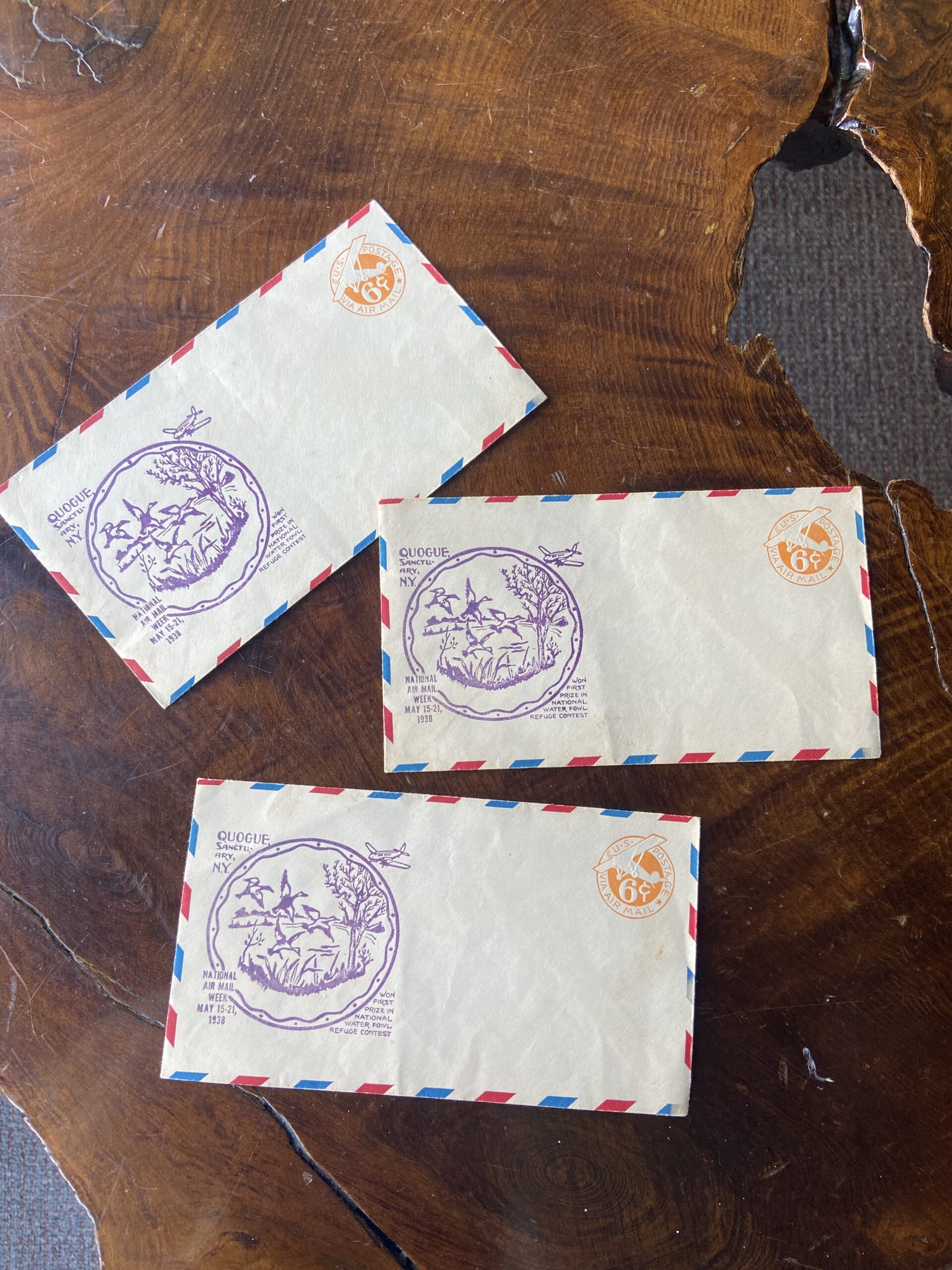
To commemorate National Airmail Week 84 years ago, the Quogue Wildlife Refuge created a stamp to be used on airmail envelopes depicting the sanctuary.
National Airmail Week was from May 15 to 21, 1938, and was created to celebrate the 20th anniversary of the first airmail. While the event was decades ago, Quogue Wildlife Refuge shared the envelopes this month to mark the anniversary of the stamp, in the hope of sharing its history with the community.
“The refuge has such a great history — it was founded in 1934, so it has 88 years of history, and we like to share the history with the community,” said Marisa Nelson, assistant director of the refuge.
“I think most people didn’t even know there was a National Airmail Week, and it was celebrated in 1938, and it was pretty special that the Quogue Wildlife Refuge was able to participate in it,” she added.
Though Americans were struggling with the Great Depression at the time, President Franklin D. Roosevelt and Postmaster General James Farley encouraged towns to create commemorative stamps, and for each American to send at least one letter during the week.
The slogan of the week was “receive To-morrow’s mail, to-day,” according to the National Postal Museum.
Americans excitedly participated — and over 4.5 million letters were sent.
The refuge was founded as Southampton Township Waterfowl Association, or Quogue Sanctuary, in 1934, and created the sanctuary to protect the black duck populations in the winter.
The refuge was able to participate after winning the Nationwide Sanctuary Contest and being participants in National Wildlife Week, according to charter member Russell Carman, in his book “Building a Sanctuary.”
The stamp, designed by waterfowl artist Roland Clark, shows four mallards flying at the north end of the main pond. Clark also designed Quogue Wildlife Refuge’s logo.
“It represents the Quogue Wildlife Refuge, or the Quogue Sanctuary, it was called the Quogue Sanctuary back then, and the refuge was founded as a waterfowl sanctuary to protect the waterfowl, so hence you can see waterfowl in the stamp,” said Nelson.